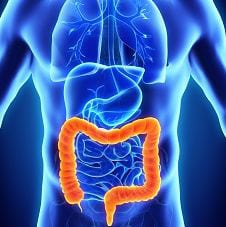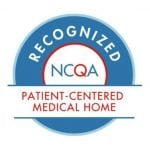 Last year, nearly 135,000 people in our country were diagnosed with Colorectal Cancer. In addition, over 50,000 people will die from this disease annually, making it the second leading cause of death from cancer (behind lung cancer). However, if this disease is discovered in its earliest stages, there is a 90% cure rate! Needless to say, early detection is paramount in helping eliminate the disastrous consequences of this potentially deadly disease.
Last year, nearly 135,000 people in our country were diagnosed with Colorectal Cancer. In addition, over 50,000 people will die from this disease annually, making it the second leading cause of death from cancer (behind lung cancer). However, if this disease is discovered in its earliest stages, there is a 90% cure rate! Needless to say, early detection is paramount in helping eliminate the disastrous consequences of this potentially deadly disease.
Colorectal cancer basically encompasses all forms of cancer cells that develop primarily anywhere in the large intestine (colon) to its termination in the anal-rectal area. Most colon cancers are adenocarcinomas that start as small abnormal growths called polyps that may occur anywhere along the wall (inside lining) of the colon. Over time, these benign (harmless) polyps may grow into dysplastic (pre-cancerous) tissue with the potential of eventually becoming malignant cancerous tissue. Over time, the cancerous cells can spread over greater areas of the colon and may eventually disseminate (metastasize) to other organs and lymph nodes. Therefore, colon cancer is staged depending upon 3 factors: 1) the size or direct extent of the primary tumor; 2) the degree of spread to regional lymph nodes and; 3) the presence of distant metastases. The good news is that the process to developing serious advanced disease is very slow – often taking 5-10 years.
The symptoms of colon cancer range from being silent (no symptoms) to having significant abdominal pain, rectal bleeding, changes in bowel movements, weakness, fatigue and weight loss. As we wish to discover any colon abnormality early on, many health organizations have now recommended age-related screening tests for all patients. The best approach to screening for Colon Cancer is out-patient Colonoscopy. Ideally, after age 50, all patients would have this procedure performed where a flexible tube is inserted through the rectum and up through the colon allowing the examiner to visualize (via video camera) very clearly the tissue and structure of the intestinal walls. Then, if any abnormal growths or polyps are visualized, the areas can re excised or biopsied for further analysis by a Pathologist. A normal Colposcopic exam allows the patient to wait another 10 years before needing to repeat the test. As an alternative, yearly testing of one’s fecal material (stool) for evidence of any active bleeding from the rectum is now accepted as an alternative to a full colonoscopic examination. However, any evidence of rectal bleeding will then require further testing such as colonoscopy.
There are several risk factors that are closely associated with the development of colorectal cancer. Firstly, there is a less common hereditary association that can be detected with genetic testing and early age colonoscopic studies. With this condition, there is typically a history of several family members developing colon cancer before the age of 50. A diet high in fats and low in fiber is considered a risk for all colonic diseases, including colon cancer. Other risk concerns include obesity, smoking and heavy alcohol consumption. Common sense would dictate that proper sleep, a healthy diet, exercise, avoidance of tobacco and excess alcohol would be of benefit in helping prevent the development of colon cancer (as well as many other health conditions and diseases)
Article written by Eastside Clinic’s Lead physician, Neil Sullivan, M.D.






